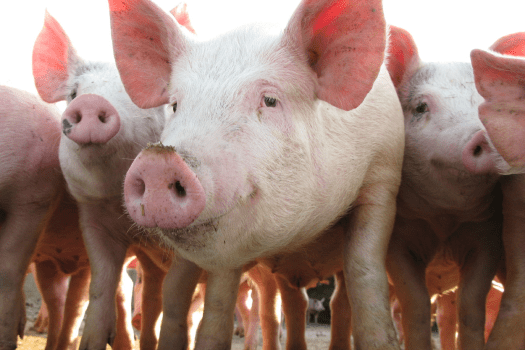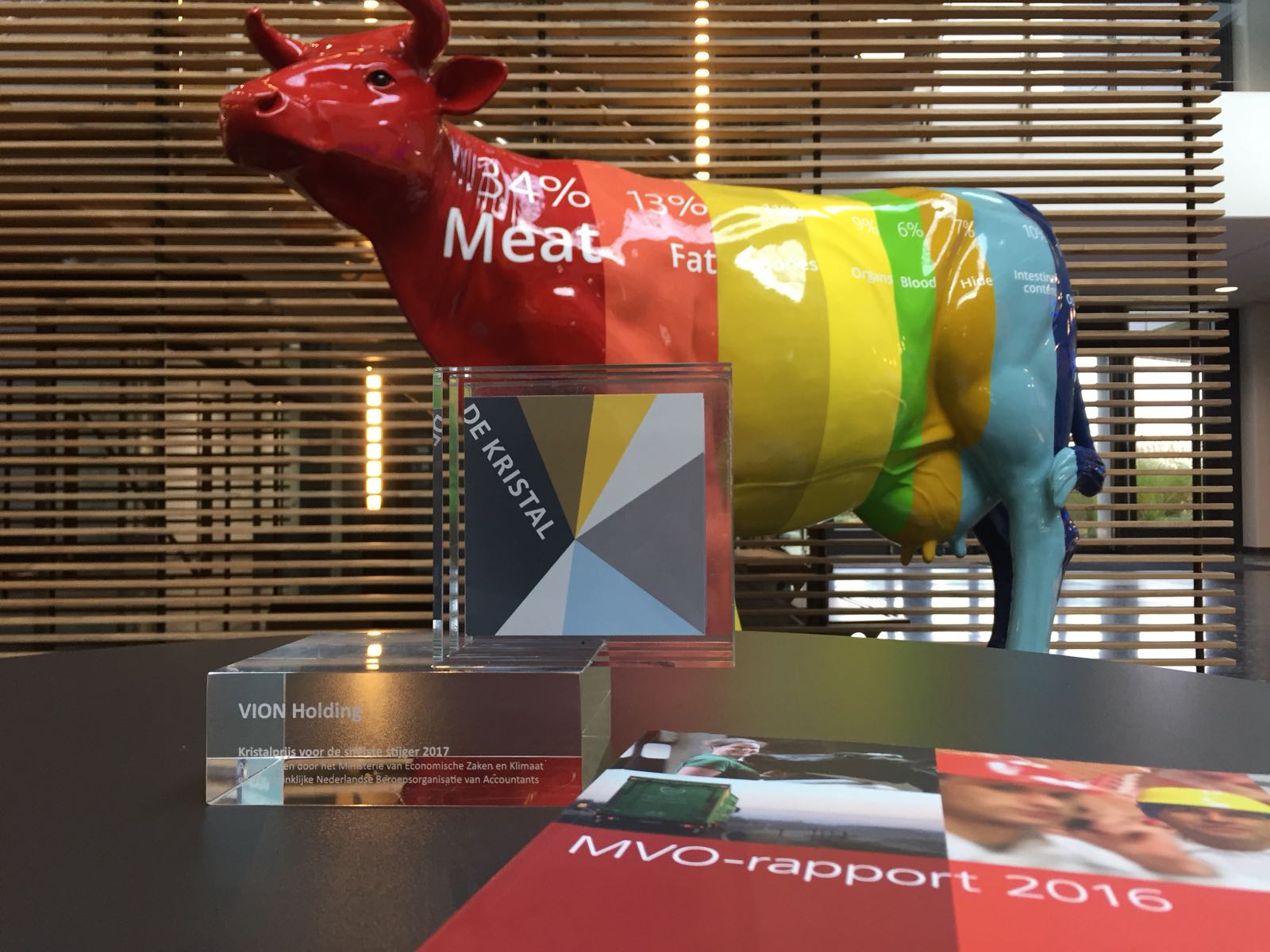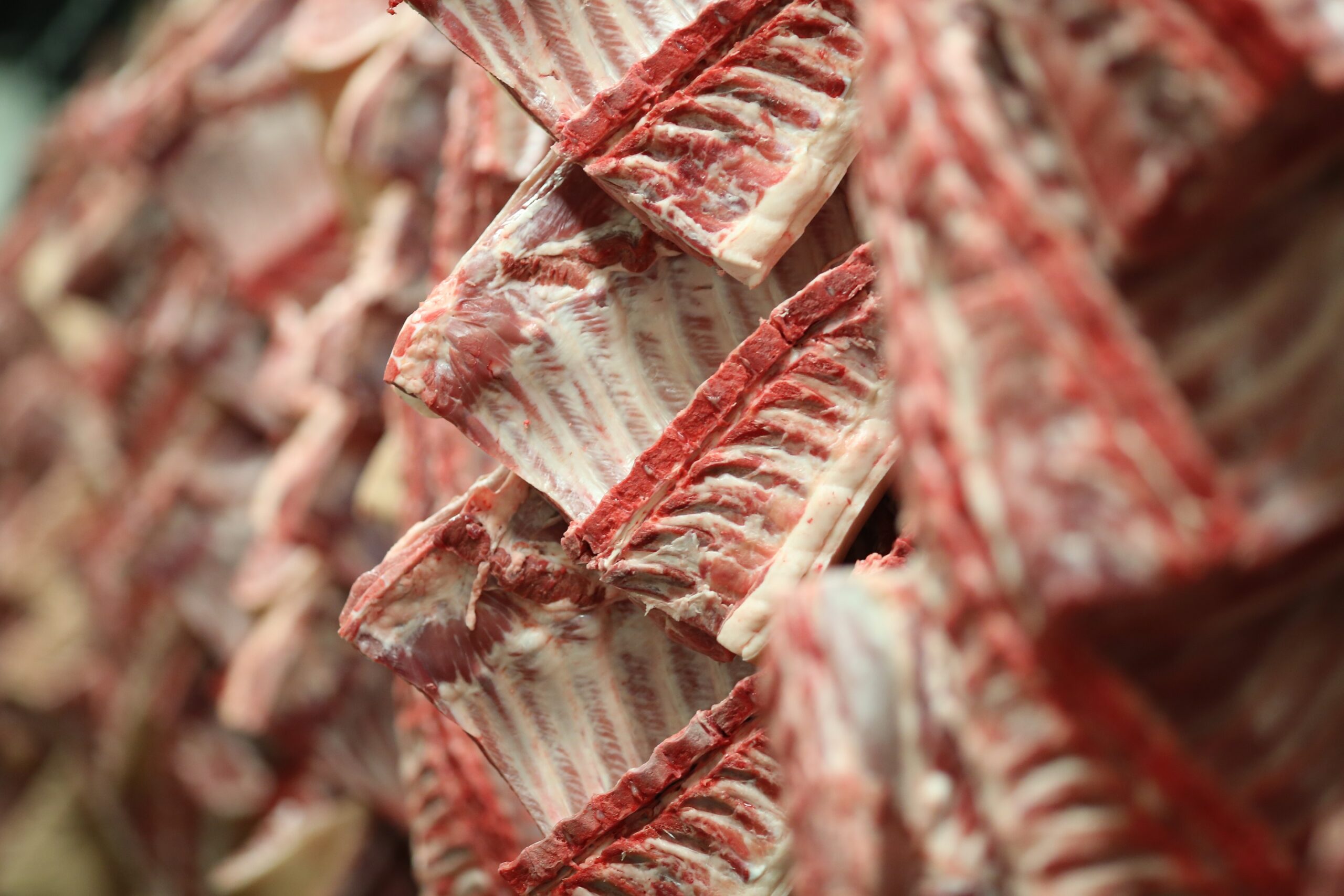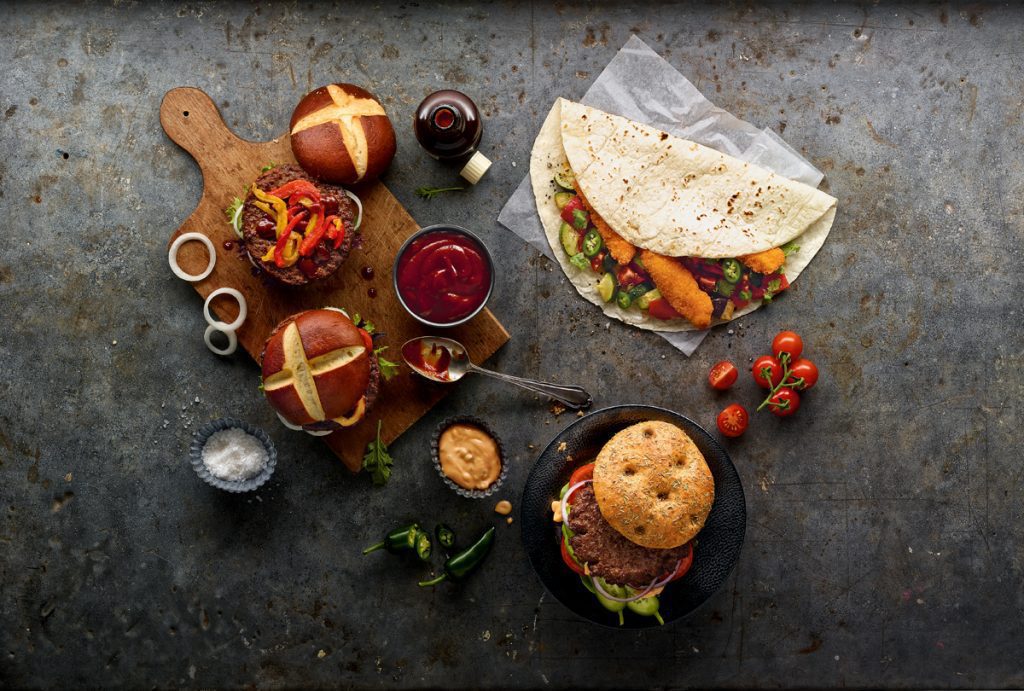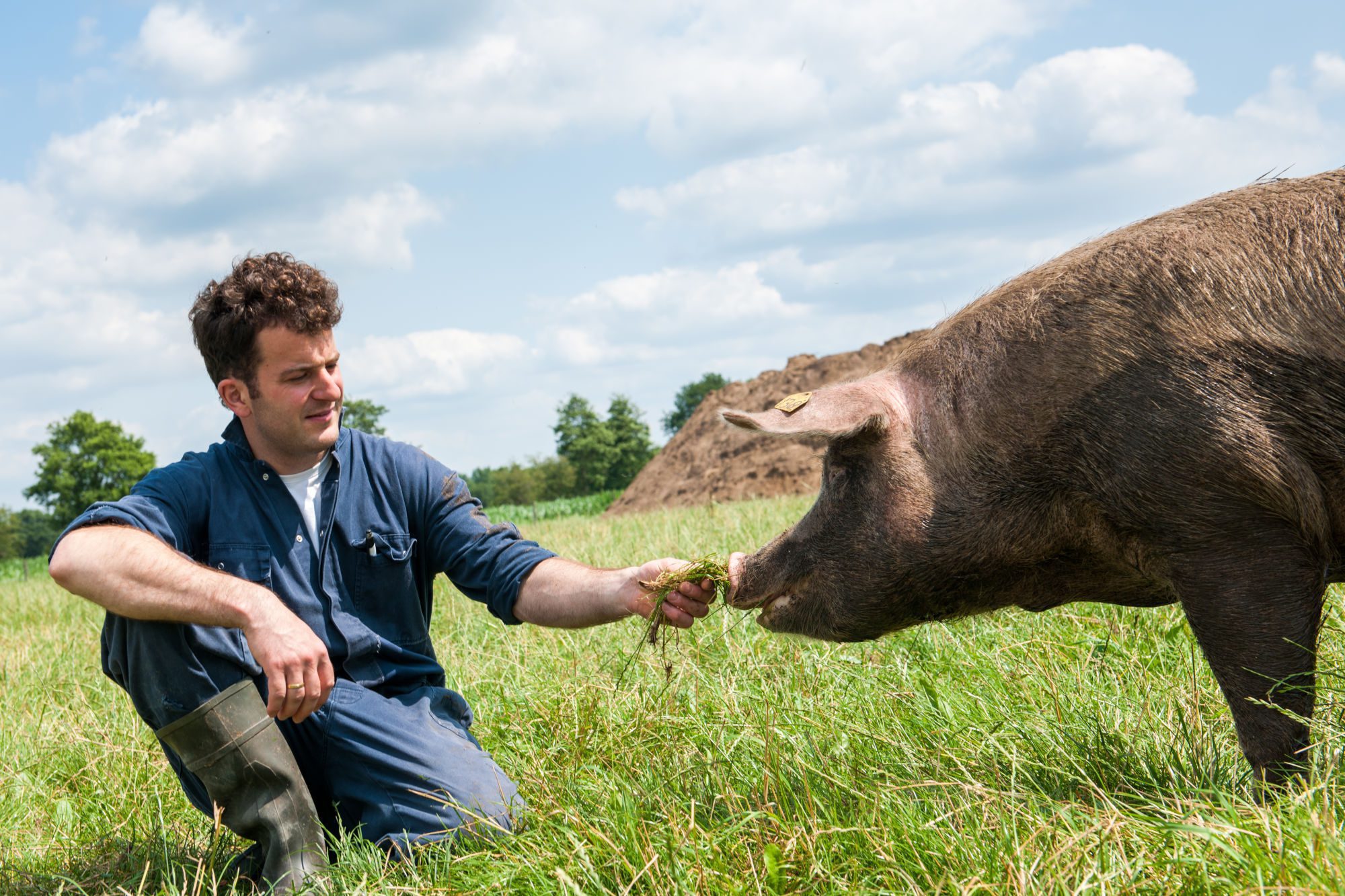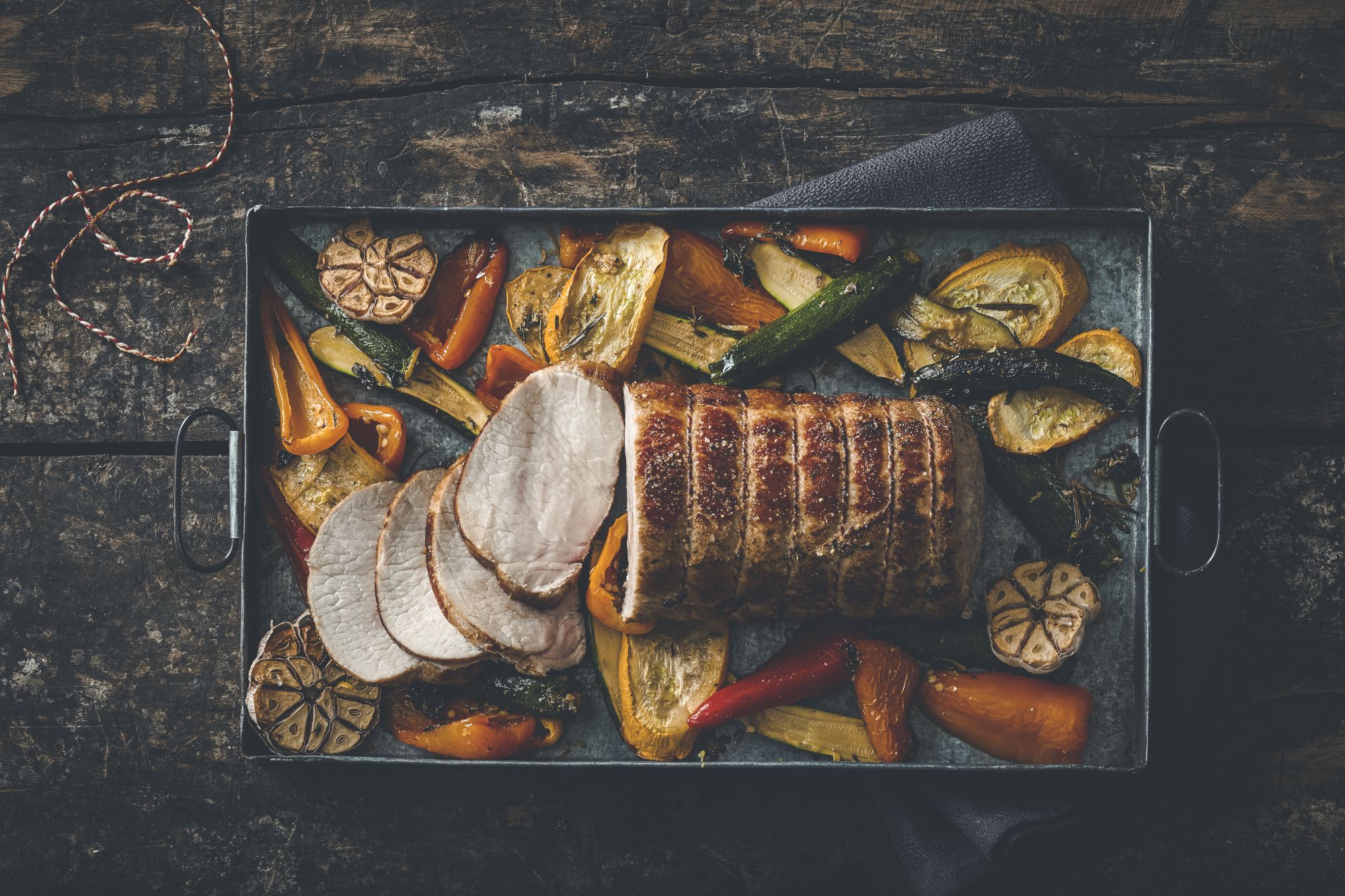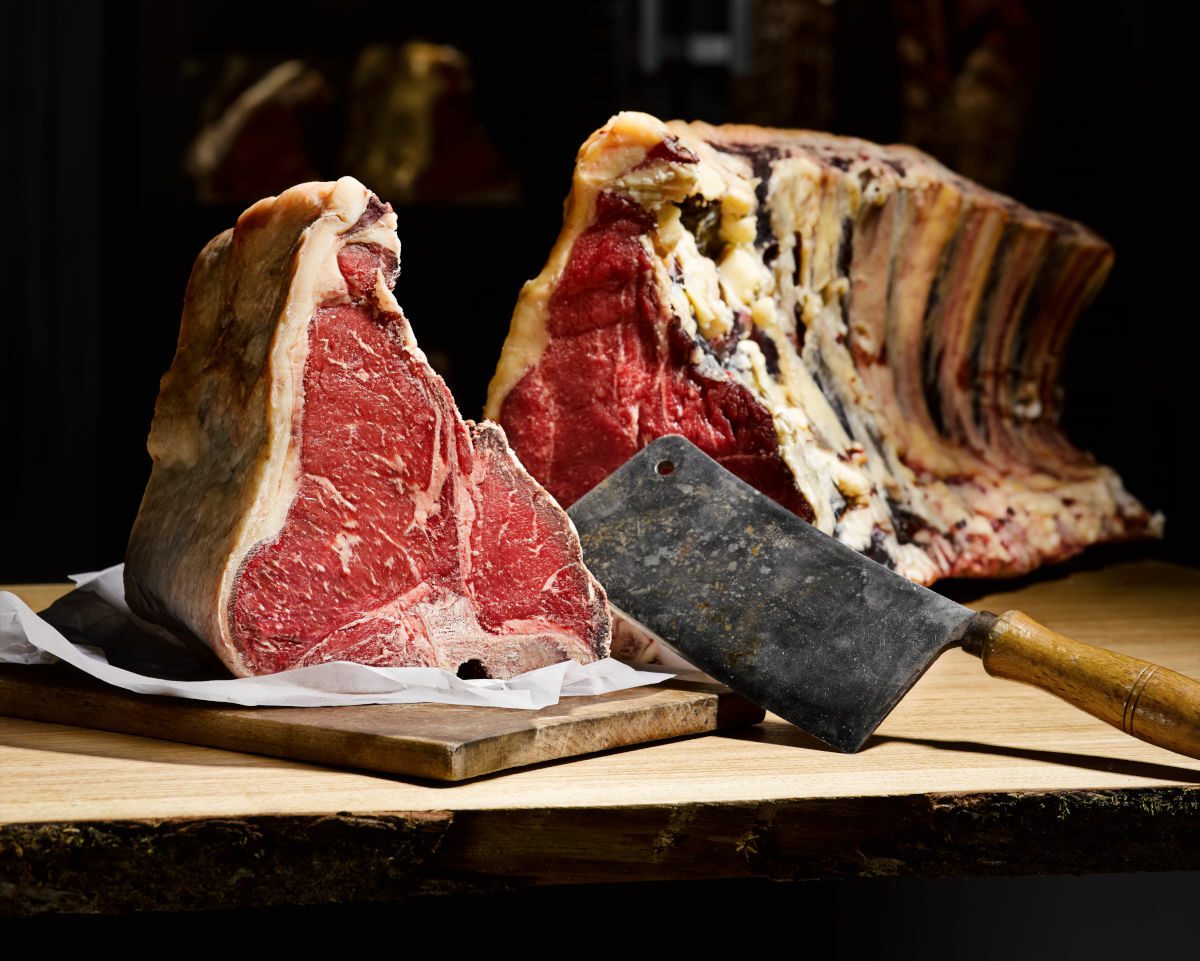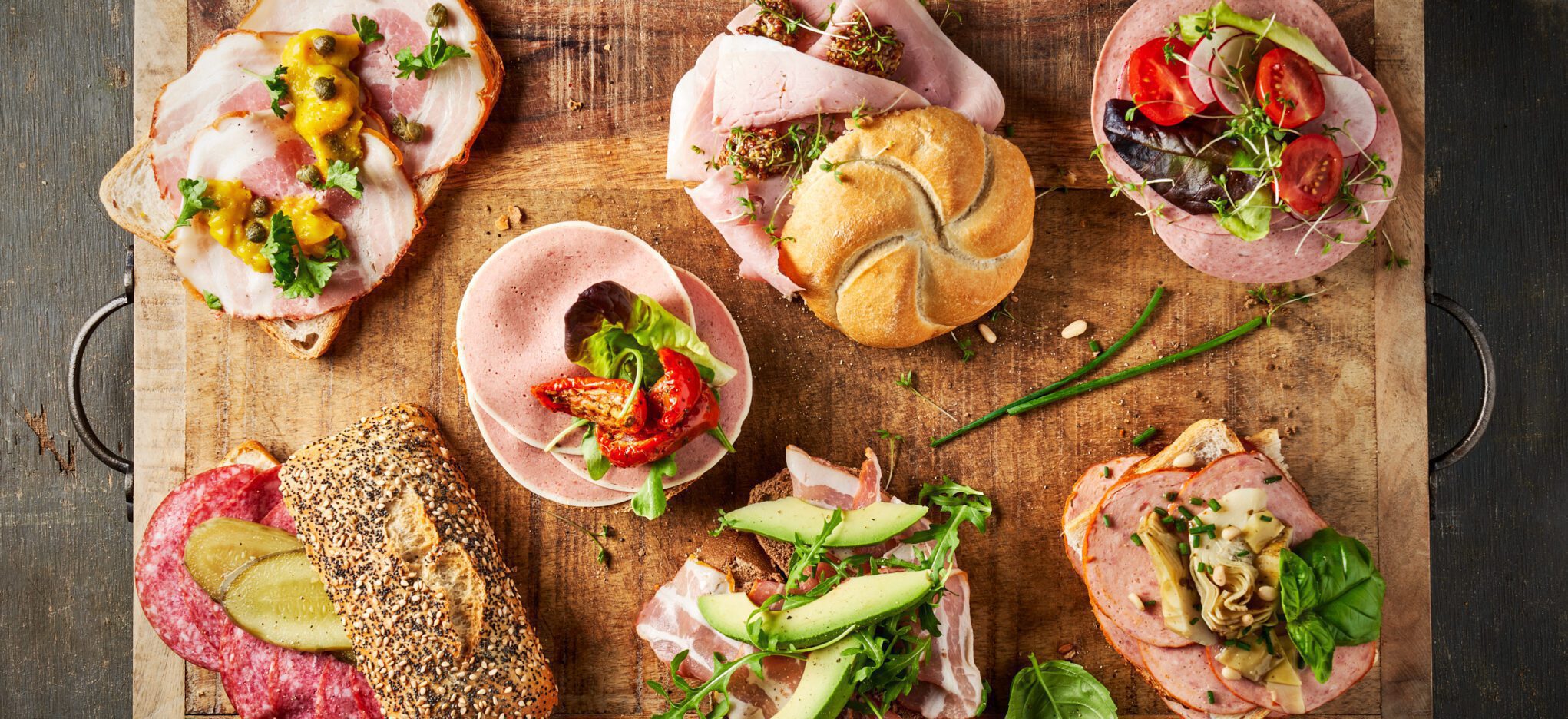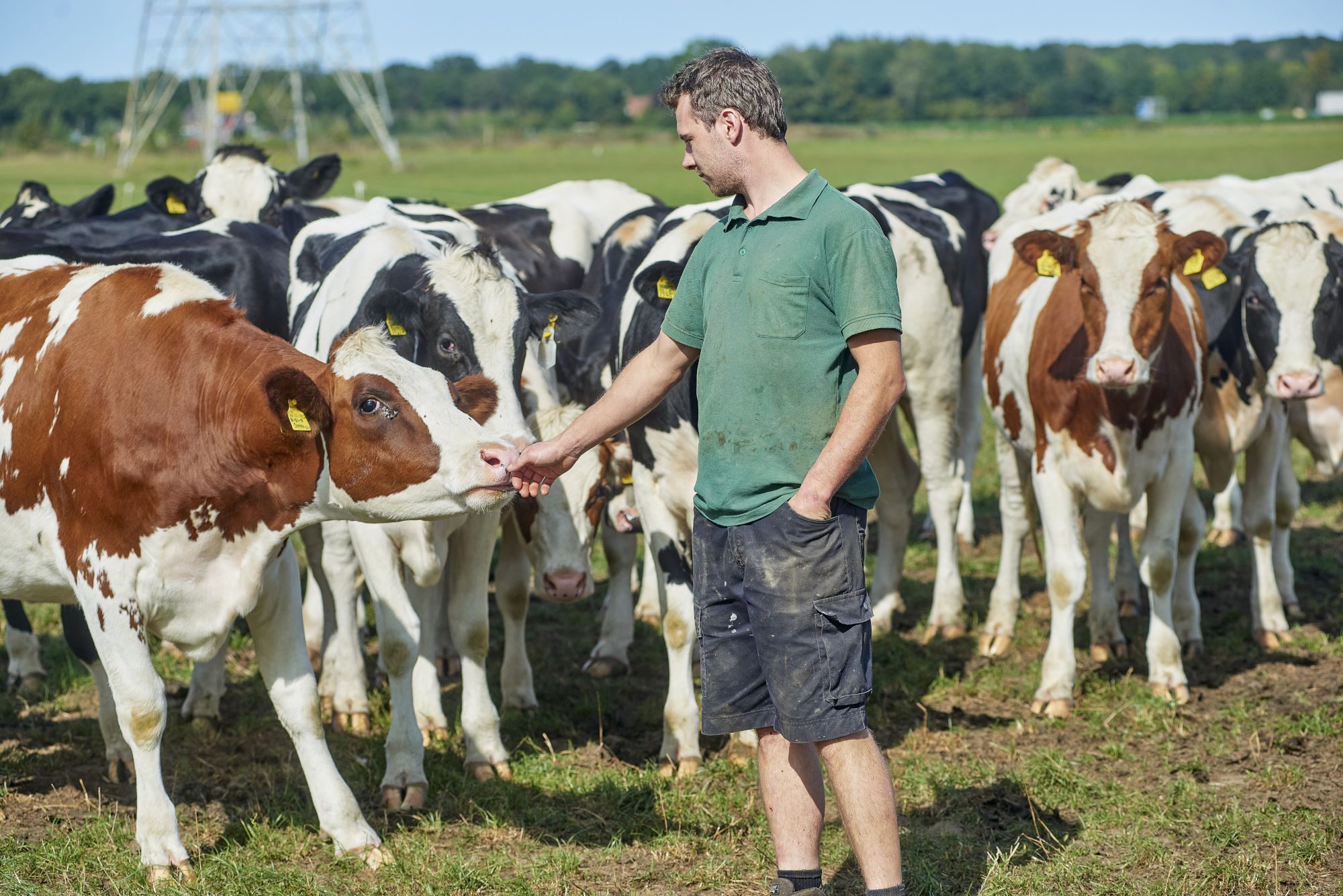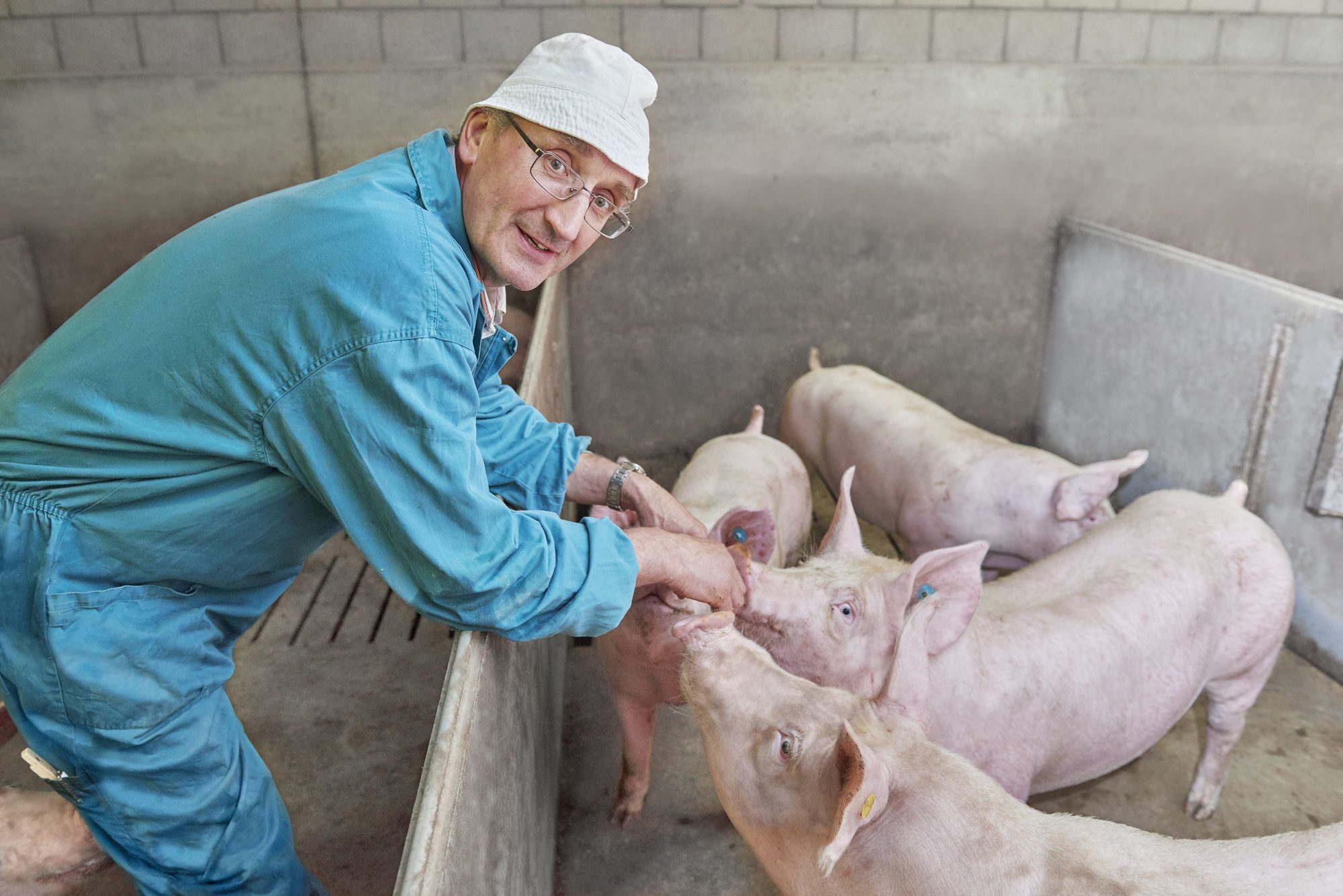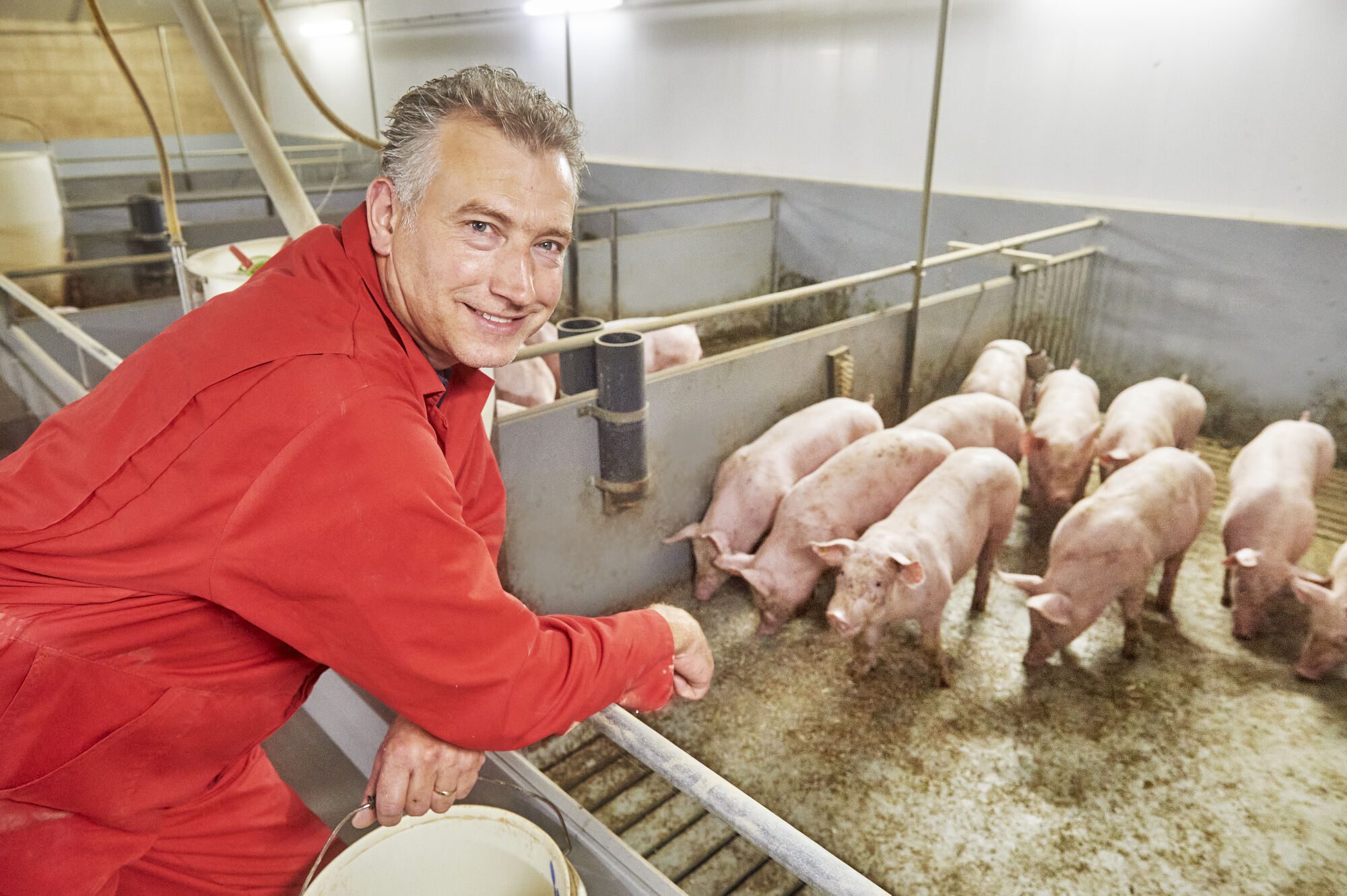
Climate
Impact on society and Vion's role
At Vion, sustainability means taking responsibility — not only within our own operations but across every step of the value chain. As one of Europe’s leading meat producers, we recognize both the impact we have and the vital role we play. This is a role we embrace not out of obligation, but by choice. Every day, we are committed to producing safe, nutritious meat while reducing our environmental footprint and promoting fair, transparent practices throughout the value chain.
We believe that building sustainable food systems is a shared responsibility. Farmers, feed suppliers, retailers, employees, and consumers all play a part. This belief drives our partnerships, investments, and ambition to lead in sustainable meat and plant-based production. We aim to lead by example and demonstrate that responsible meat production is not only possible — it is essential and already underway.
Our approach is structured, data-driven, and continuously evolving. We focus on areas where we have the greatest impact: producing safe, healthy, and traceable food; enhancing animal welfare; ensuring safe working conditions; reducing emissions; protecting biodiversity; and using resources efficiently.
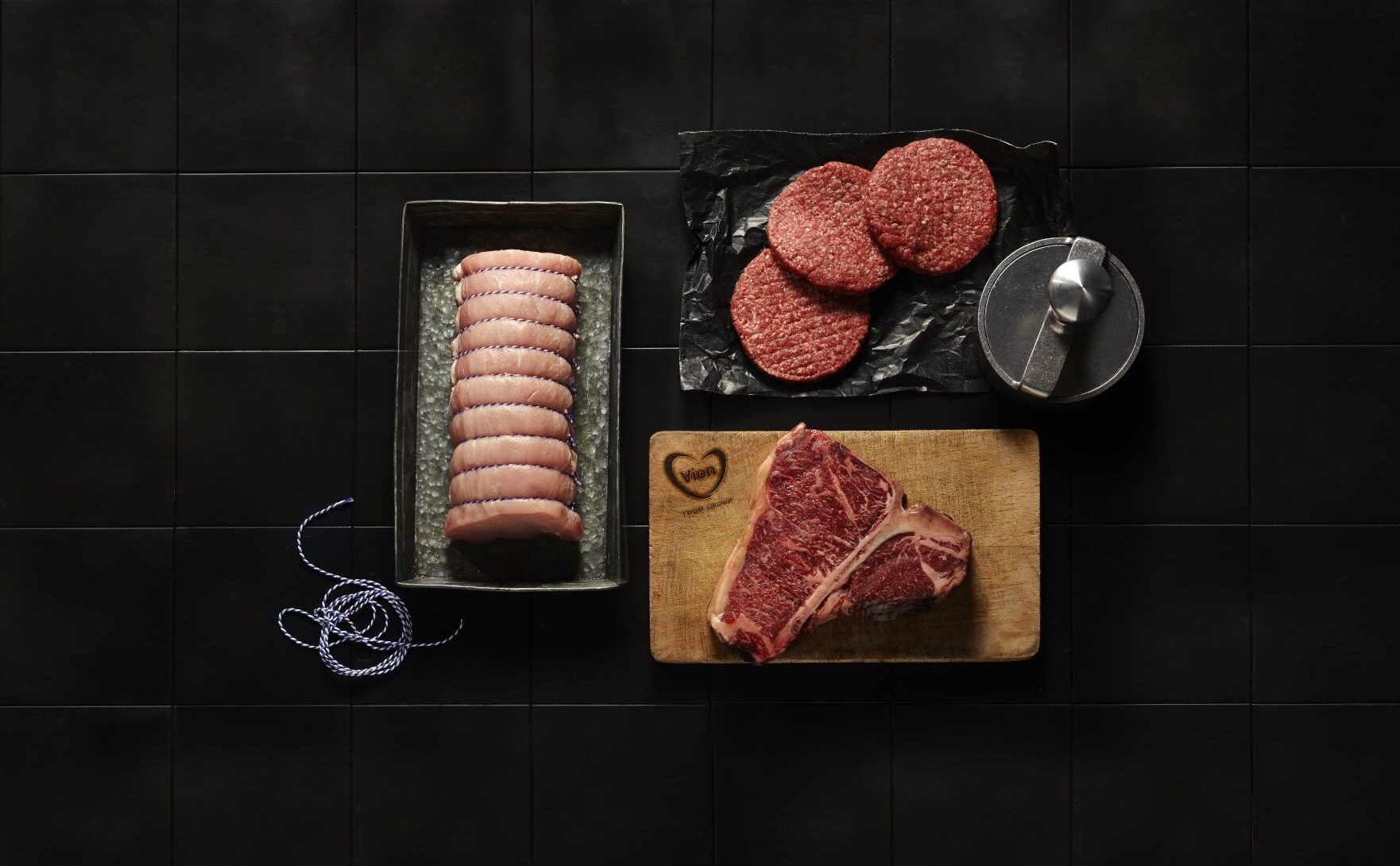
Scope of Our Policy
Our sustainability policy applies to all aspects of our operations —from production facilities to the entire supply chain —and involves all employees and stakeholders. It addresses:
- Scope 1: Direct emissions from owned or controlled sources
- Scope 2: Indirect emissions from purchased energy
- Scope 3: All other indirect emissions across the value chain
Less than 2% of our total greenhouse gas (GHG) emissions fall under scopes 1 and 2, highlighting the critical importance of addressing scope 3. Within scope 3, livestock farming and purchased meat account for approximately 90% of our emissions. Our holistic approach ensures that every part of our business contributes to our climate goals.
Environmental Responsibility
We are actively working to reduce our environmental footprint across e.g. transportation, animal husbandry, and processing. Our efforts are driven by three key pillars:
- Energy Transition: Increasing the use of renewable energy and improving energy efficiency (Scope 1 & 2)
- Sustainable Supply Chain: Collaborating with suppliers to reduce upstream emissions and promote sustainable sourcing (Scope 3)
- Circular Economy: Minimizing waste, optimizing resource use, and fostering product lifecycle innovation (Scope 3)
Our Climate Change Policy reflects a comprehensive approach to sustainability. To ensure our targets are science-based and aligned with the Paris Agreement’s goal of limiting global warming to 1.5°C, Vion has committed to the Science Based Targets initiative (SBTi). Our approved target is a 42% absolute reduction in GHG emissions across scopes 1, 2, and 3 by 2030.
In addition we are developing a roadmap to achieve net zero emissions in our own operations (scopes 1 and 2) by 2040, and across our full supply chain by 2050. Our resources will be prioritized for emission reductions. Only residual emissions that cannot be eliminated will be offset through Carbon Dioxide Removal (CDR) measures, expected to be necessary from 2040 onward. At that point, we will conduct a thorough evaluation to determine which CDR strategies best align with our company’s goals.
Targets
In 2021, we collected comprehensive emissions data from all our entities, covering scopes 1, 2, and 3 in accordance with the GHG Protocol Corporate Standard. This data formed the basis for our climate strategy and was validated through our commitment to the SBTi, with target approval received in 2023.
We are committed to a 42% reduction in GHG emissions across scopes 1, 2, and 3 by 2030, compared to our 2021 baseline. Next to that we aim to achieve net zero emissions in our own operations (scopes 1 and 2) by 2040 and across the full supply chain by 2050.
We will set new targets every five years, starting in 2030 for 2035, to ensure continuous progress toward our ultimate goal.
To meet these targets, we are:
- Improving energy efficiency across operations
- Investing in advanced technologies and processes
- Promoting sustainable practices throughout our supply chain
- Engaging stakeholders—including suppliers, customers, and employees—to foster a culture of sustainability and collective climate action
Action Plans for 2030
To achieve our 2030 goals, Vion has developed detailed action plans, including:
Scope 1
- Replace all Freon-based cooling systems
- Transition of gas-afterburners to electric solutions
- Establish first gas- and fossil-free production sites
- Electrify 30% of owned and leased trailers
Scope 2
- Source 100% green electricity
- Produce 5% of green electricity in-house
- Ensure 25% of green electricity in NL and DE is locally produced
Scope 3
- Achieve 35% GHG reduction in pig feed within the Good Farming Star (GFS) chain
- Achieve 35% GHG reduction in manure management at GFS pig farms
- Achieve 35% total GHG reduction at (dairy) beef farms by optimizing methane emissions and feed intake
For more details on the power chain model, please refer to the section: GHG Calculations on Farm Level.
Team Effort
Progress in climate action requires full organizational involvement—from top management to production sites, finance, procurement, sales, etc. To support this, we offer a comprehensive ESG training (including climate targets) via our internal training platform, the Vion Academy.
Our Chief Sustainability Officer is part of the leadership team, and sustainability KPIs are integrated into our dashboards to track and motivate emission reductions across the organization.
Together, we are committed to achieving our goals.
News & Stories
GHG Emissions and Reduction Efforts
Below is an overview of our calculated greenhouse gas (GHG) emissions over recent years, categorized by scope, along with the actions we’ve taken over the past year to reduce these emissions.
Vion’s business underwent significant changes in 2024, including the sale and closure of several sites. Further restructuring is planned for 2025, including the divestment of German beef operations. These changes were not yet reflected in the Scope 1, 2, and 3 data presented here, which still represent Vion’s total output for 2024. In 2025, we will revise our base year and update our CO₂e emissions to reflect the new organizational structure. This recalibration will result in significantly lower figures than those shown in this overview.
GHG emissions are reported in CO₂ equivalents (CO₂e). To ensure accuracy, we collect primary data directly from our operations and supplement it with secondary data from external databases. Emissions are calculated by combining usage or expenditure data with corresponding emission factors and are categorized into the three standard scopes.
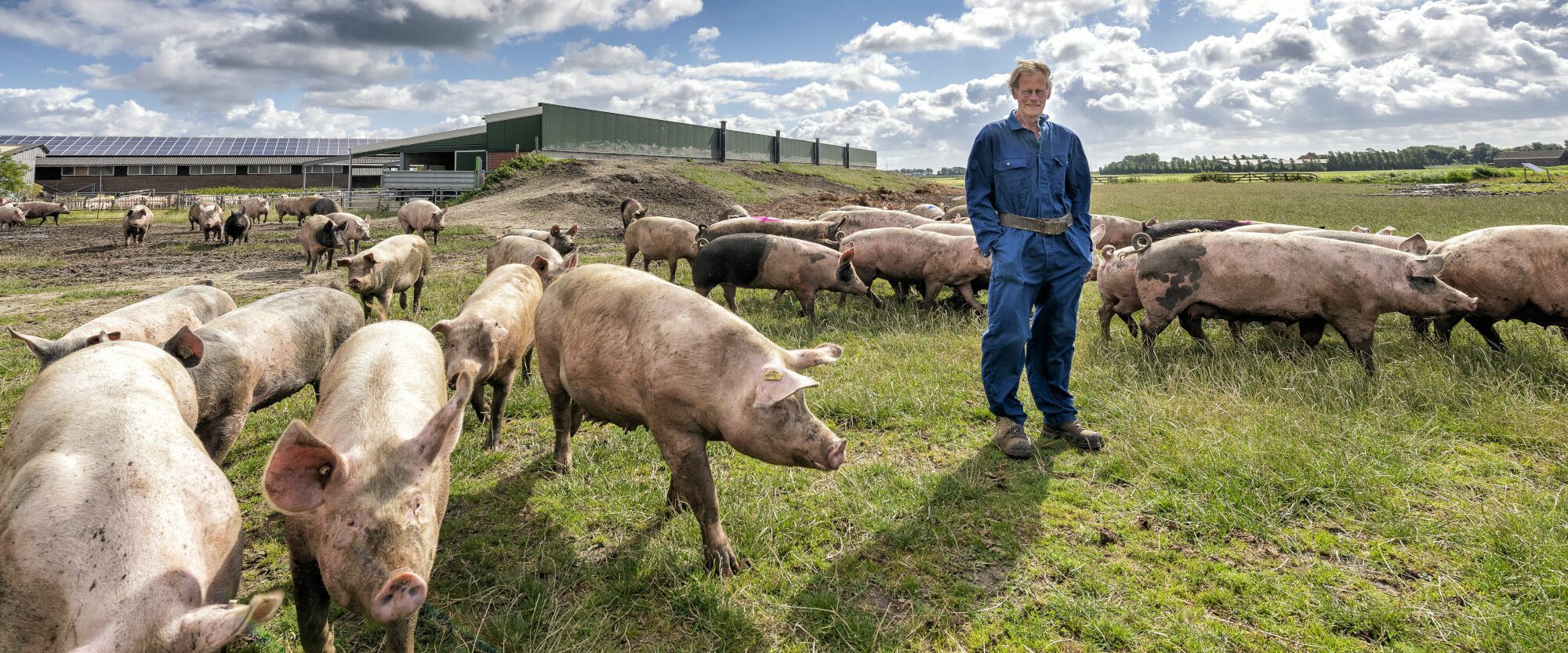

Scope 1
Significant progress was made in reducing Scope 1 emissions across all three subcategories. These reductions align well with our 2030 Science Based Targets initiative (SBTi) goals. While part of the decrease is due to lower production volumes, it is also driven by targeted investments, including:
- Installation of heat pumps at multiple locations
- Partial and complete replacement of cooling systems
- Upgrades to and replacement of heating systems
- Transition from diesel to electric forklift trucks
- Increased use of hybrid and electric company vehicles and electric trailers
- Installation of new electric charging stations
In total, over €3 million was invested in these improvements. Additionally, we implemented operational efficiency measures, such as optimizing flame oven settings and consistently powering shunting trailers with electricity instead of diesel. These combined efforts resulted in a reduction of over 6,000 tons of CO₂e and more than 13,000 tons of CO₂e when including the closure of 3 German sites.
Further investments are planned for 2025 to continue reducing Scope 1 emissions.

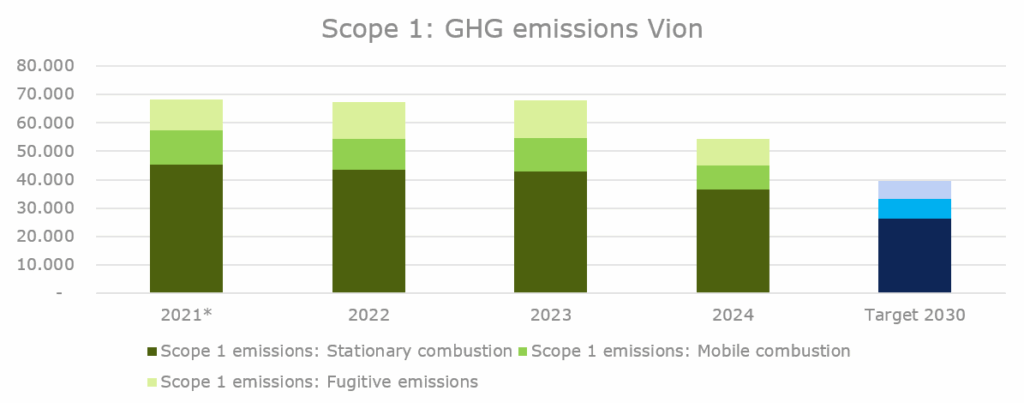
Scope 2
We also made substantial progress in Scope 2, with reductions aligning with our 2030 SBTi targets. Key actions included:
- Signing new Power Purchase Agreements (PPAs) for our two Foodservice plants in Germany, now powered by 100% German green electricity
- Switching ME-AT Leeuwarden to 100% Dutch green energy from a nearby solar field
- Purchasing 100% Dutch green energy for Vion Groenlo
- Generating approximately 200 MWh of electricity from solar panels at Vion sites
- Purchasing over 2,000 MWh of solar energy from the rooftop installation at our Den Bosch cold store
These actions added up to a total share of renewable electricity of 17%.
Operational improvements also contributed to energy savings, including:
- LED lighting upgrades
- Retrofitting frequency converters on cooling systems
- Installation of timers and optimization programs for cooling systems
- Refurbishment of machinery
These efforts resulted in savings of over 5,000 MWh, and more than 20,000 MWh when including the closure of 3 German sites.
In 2025, we will maintain at least the current level of renewable electricity. From 2026 onward, a new bundled energy contract will provide renewable electricity for all Dutch plants—a major step toward our goal of 100% renewable electricity by 2030.

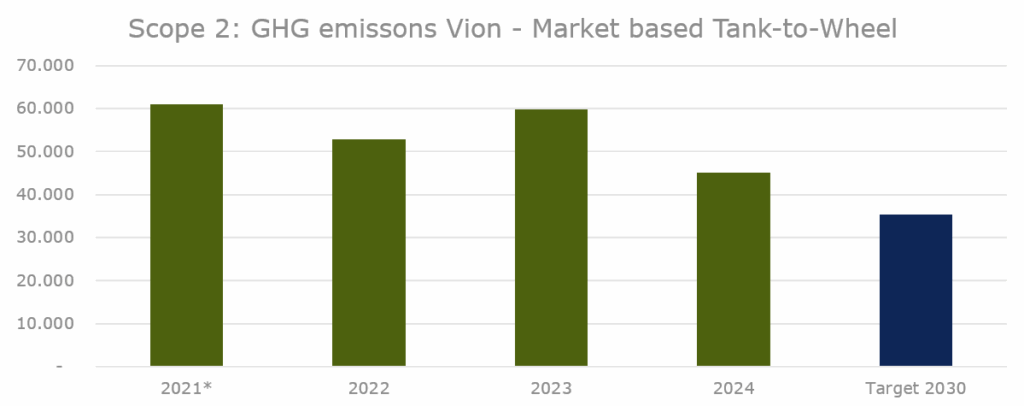
Scope 3
In Scope 3, we improved our calculation methodology, including retroactive adjustments based on new insights and better primary data. These updates have lowered our overall footprint, including the base year, and offer clearer insights into key emission categories and their relevance to our SBTi targets. We plan to submit updated values to the SBTi in 2025.
Despite these changes, we remain on track with our Scope 3 goals. Most categories show a decline, primarily due to reduced production volumes. Updated calculations confirm that purchased animals and meat now account for over 90% of Scope 3 emissions, consistent with expectations. These are classified as FLAG (Forest, Land, and Agriculture) emissions.
To reduce FLAG emissions, we are working closely with farmers to provide better insights into their CO₂e emissions and support further reductions. We are also running new pilot programs focused on feed and manure management.
Two categories showed slight increases:
- Business travel: Rising again compared to the 2021 base year, which was impacted by COVID-19. This category is calculated based on expenditure, and travel costs have increased.
- Category 8 (shop-in-shop butcheries): Growth in the number of locations in the Netherlands has led to higher emissions.
Overall, we are seeing strong reductions across most categories. With new procurement strategies, we expect to further reduce upstream emissions.
We have recently begun incorporating CO₂e data into tenders for non-food suppliers. This next step raises awareness across our supply chain and allows us to evaluate suppliers not only on price and service but also on the financial impact of their carbon footprint. For CO₂e valuation, we use data from carboncredits.com.
Among all Scope 3 categories, Category 1 remains the largest and receives our highest priority. However, we continue to include all categories in our reduction strategy.
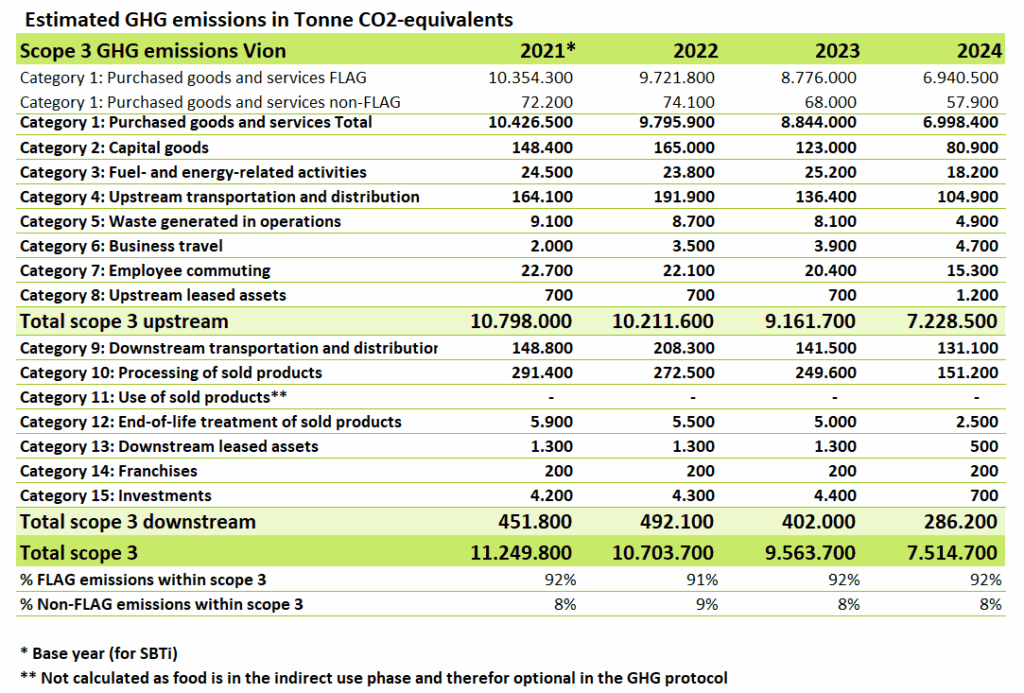
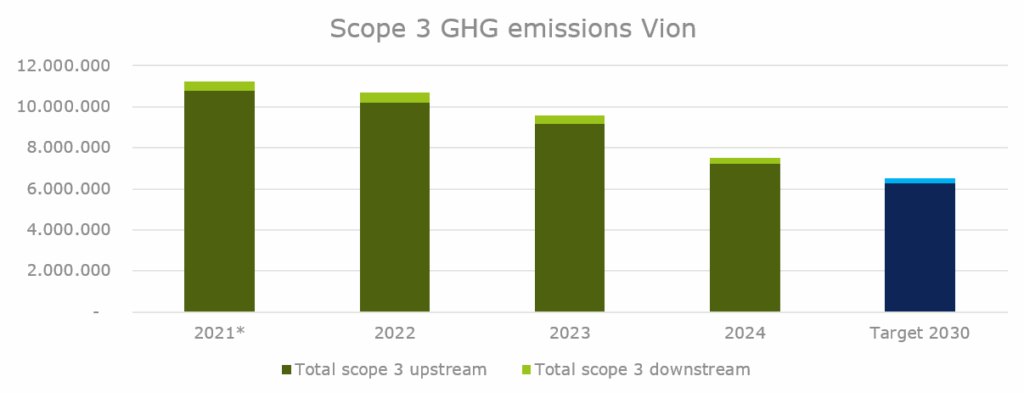
News & Stories
GHG Emissions on Farm Level
Livestock farming and purchased meat account for approximately 90% of our Scope 3 emissions. To meet our reduction targets, we actively pursue partnerships with dedicated suppliers.
Understanding the interconnected nature of the food industry, we collaborate with a wide range of stakeholders—including farmers, customers, feed companies, and research partners. This cooperative approach is rooted in the belief that meaningful carbon reduction requires collective action across the supply chain. Together, we strive to drive lasting, positive change and promote sustainable practices beyond our direct operations and control.
A key element of our strategy is working with farmers and feed companies to reduce the carbon footprint at the farm level. By integrating sustainable practices into agricultural operations, we aim to create a positive feedback loop that benefits both the environment and the farming community. We engage in discussions with industry partners to explore solutions to a range of environmental challenges.
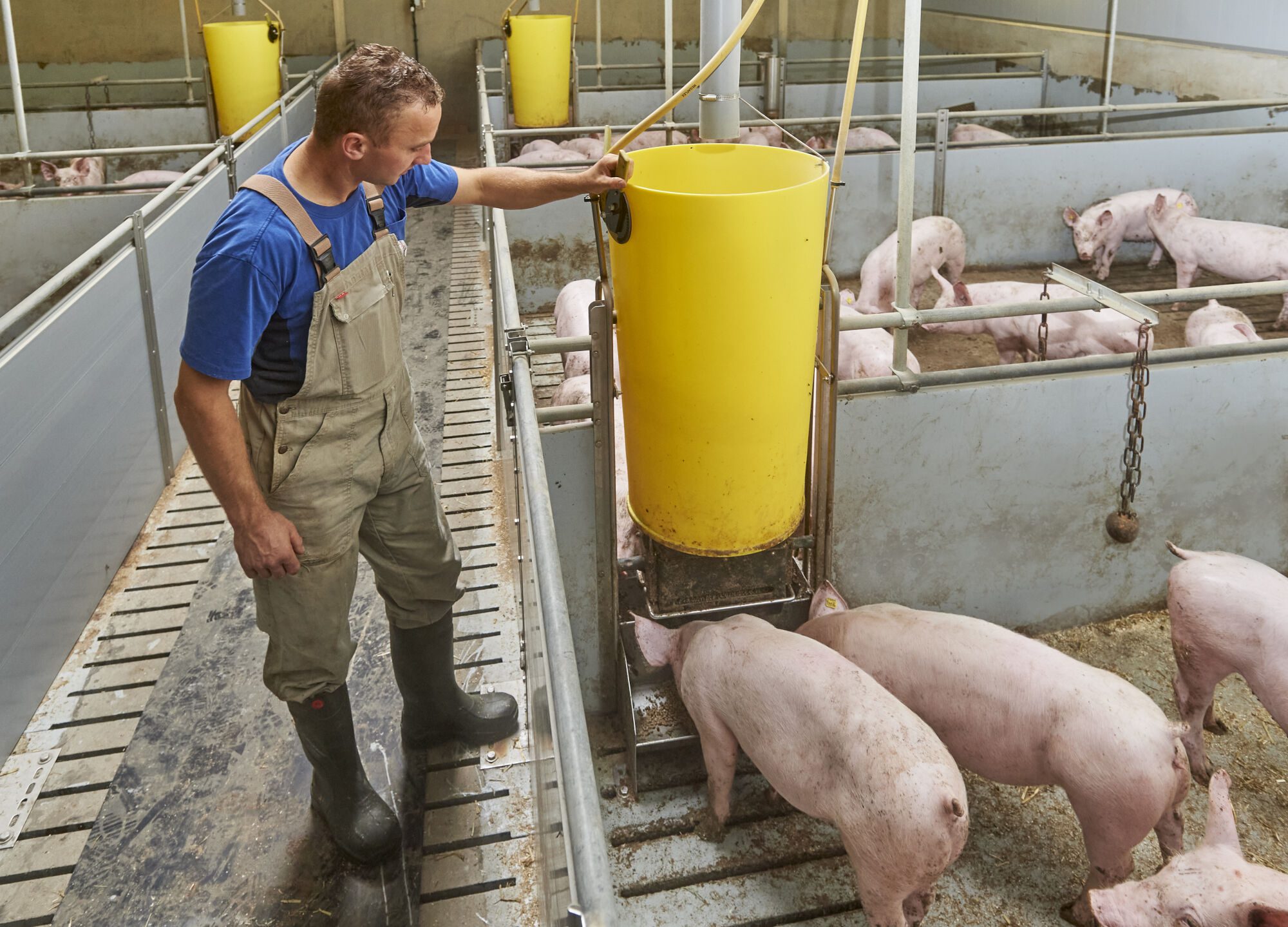
Carbon Footprint Calculation Methodology
Central to our climate strategy is the use of Life Cycle Assessment (LCA), aligned with Product Environmental Footprint Category Rules (PEFcr) where applicable. These methodologies offer a standardized and comprehensive framework for assessing the environmental impact of products and processes. This enables Vion to identify key areas for improvement and implement targeted emission reduction measures.
We actively participate in efforts to harmonize carbon footprint methodologies at both national and international levels. Our calculation method, developed by Wageningen University, is:
- Based on internationally accepted standards (PEFcr and ISO LCA)
- Scientifically accurate and robust
- Transparent to customers, consumers, and governments
- Recognized by authorities
- Based on primary data from farms and suppliers, extrapolated for comparable operations
- Capable of identifying footprint reduction opportunities across the supply chain
- Aligned with current and future industry methodologies
Data Infrastructure and Implementation
Effective footprint calculation requires reliable raw data from supply chain partners, including farms and feed suppliers. Essential data includes:
- Feed composition and origin
- Production performance metrics
- Manure management practices
- Use of renewable energy sources across the supply chain
Power Chain Model: Ensuring Transparency and Reliability
Our goal is to ensure transparent and reliable data for accurate CO2 footprint calculations. These calculations must also be auditable. To facilitate secure data sharing and trustworthy results, we developed the Power Chain model. In this model, farmers submit data to ImpactBuying, which then collects additional data from suppliers and systems (e.g., feed suppliers) to calculate the final CO2-equivalent footprint. Data requests are managed and protected via JoinData and non-disclosure agreements, ensuring that primary data is securely sourced and auditable.
Transparency and benchmarking among farmers reveal opportunities for continuous improvement. We provide relevant supply chain data to help pig and cattle farmers implement CO2 reduction strategies, including benchmarking farm footprints and input supplies.
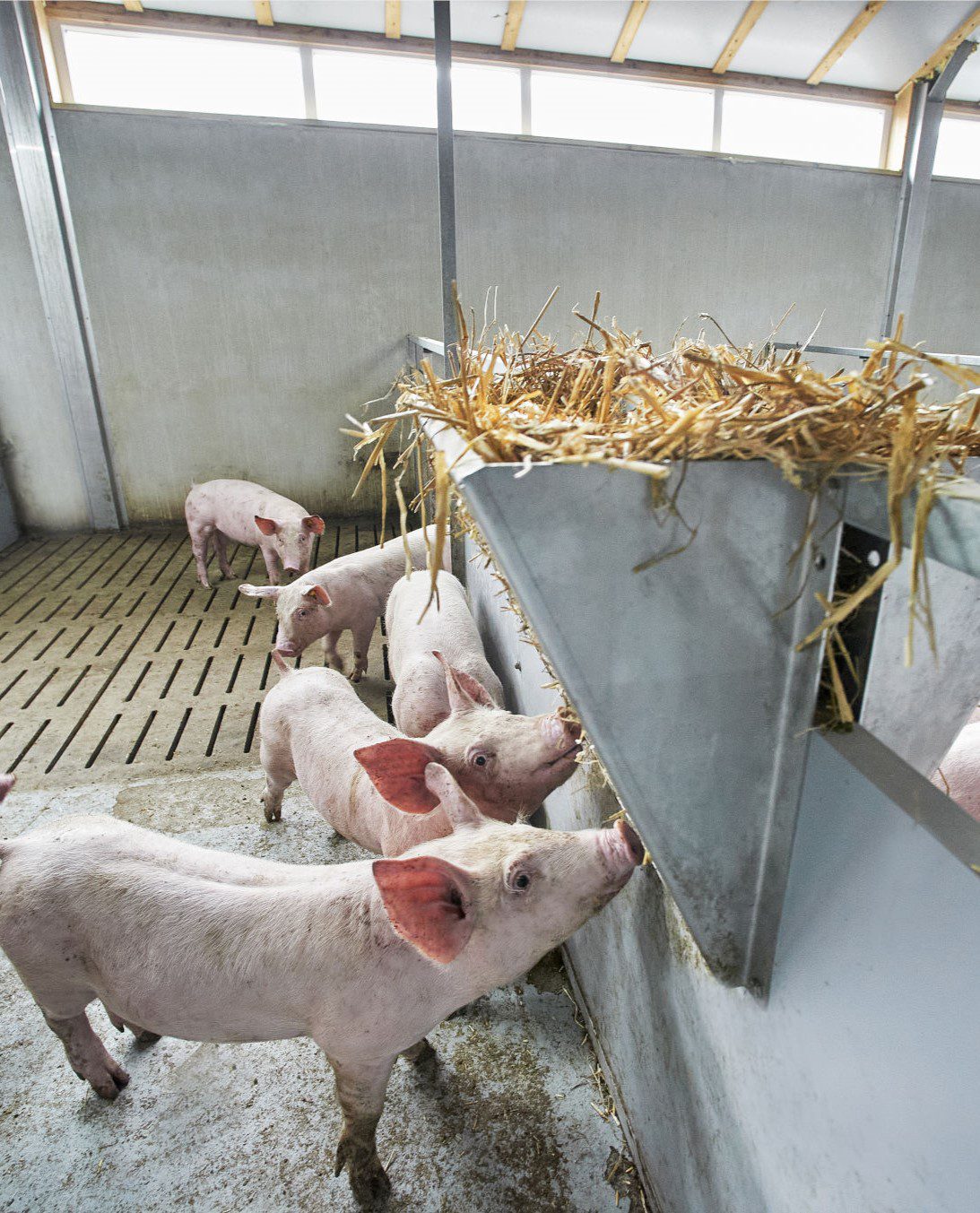
Carbon Footprint of Pork
The carbon footprint of pig farming is primarily driven by feed production and manure management. Our assessments show significant variation between farms. Reducing this variation by half could lower the overall footprint by at least 20%.
In the Netherlands and Germany, regional pig diets largely consist of food industry by-products. These have a lower carbon footprint compared to conventional feed ingredients like soy, making them a valuable option for reducing emissions. Farmers can choose these environmentally friendly feed sources, and advances in science and technology can further enhance feed efficiency.
Recent studies have identified effective strategies for reducing methane and nitrous oxide emissions from manure management. For example, daily manure removal and shorter storage durations can significantly lower greenhouse gas emissions. Encouraging farmers to adopt these practices will contribute to substantial emission reductions.
Carbon Footprint of Beef
Vion primarily processes dairy cattle and their offspring, which have a lower CO2 footprint compared to pure meat breeds. Despite this, we remain committed to further reducing emissions. However, progress in cattle farming is more complex due to biological factors such as enteric methane production in the rumen. These emissions represent a significant portion of the total footprint.
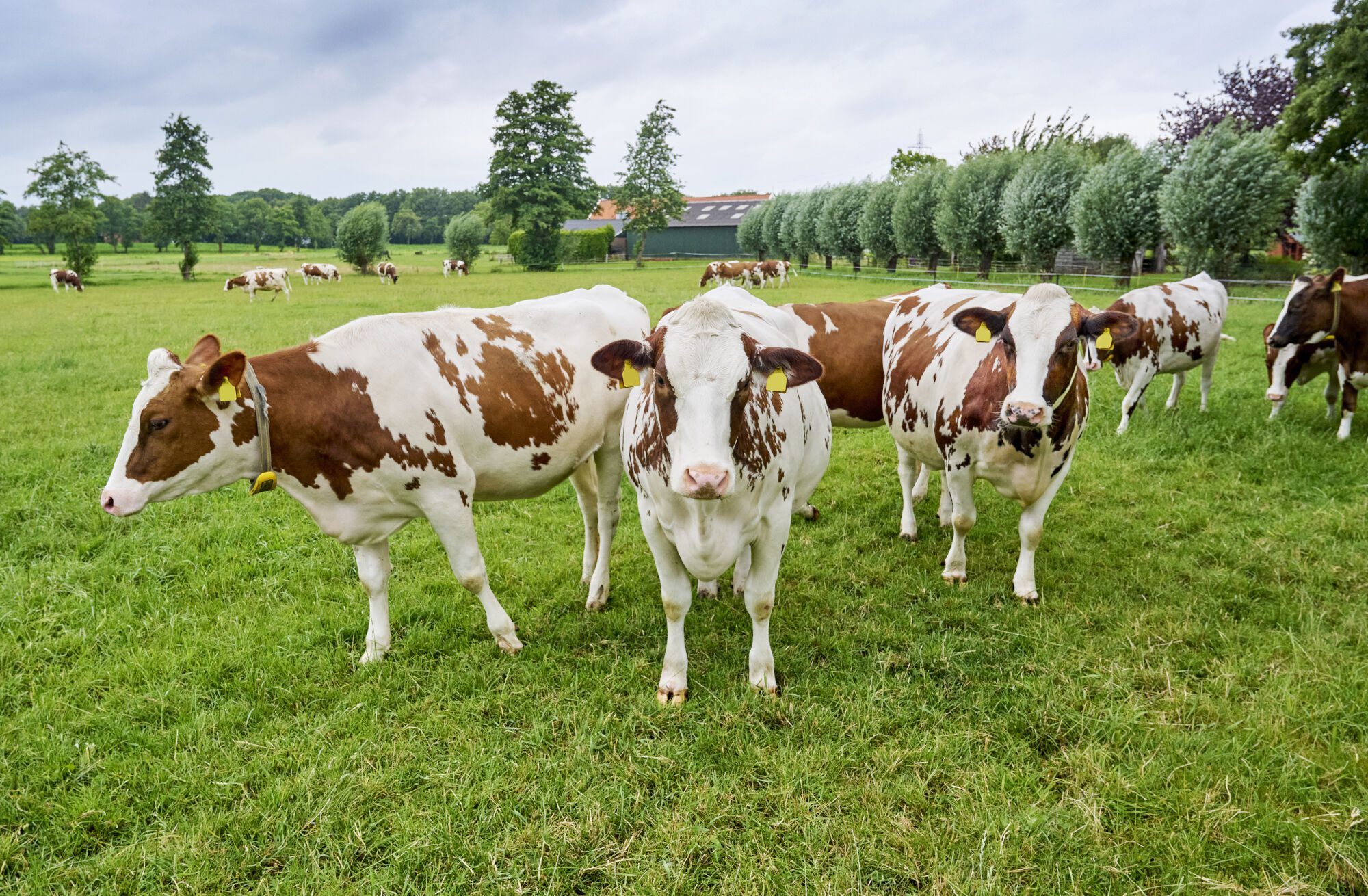
Allocation Dilemma
There are differing views on how to allocate emissions among the various products derived from livestock, such as meat, hides, milk, and skin. Should allocation be based on economic value, volume, or biophysical energy requirements? The EU favors economic allocation for its comparability across food items. However, this approach means that changes in market value can affect the calculated footprint. Vion adheres to the EU-preferred method: PEF based on economic allocation.

